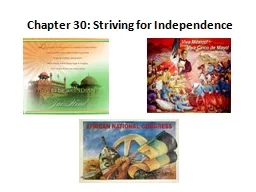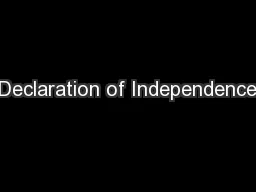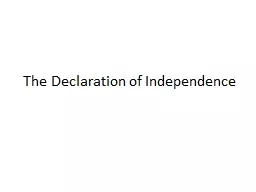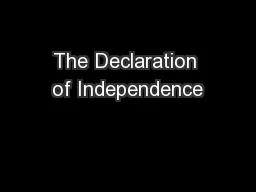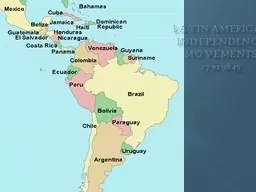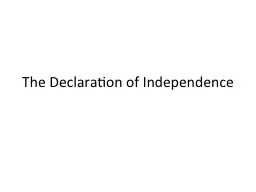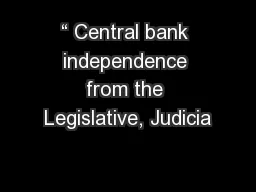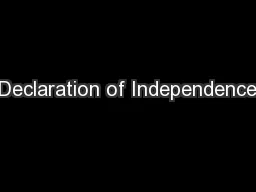PPT-Chapter 30: Striving for Independence
Author : min-jolicoeur | Published Date : 2018-10-27
India Early 20 th century 19001941 Indias population increased dramatically Environmental pressure deforestationdeclining farm land Society divided into classes
Presentation Embed Code
Download Presentation
Download Presentation The PPT/PDF document "Chapter 30: Striving for Independence" is the property of its rightful owner. Permission is granted to download and print the materials on this website for personal, non-commercial use only, and to display it on your personal computer provided you do not modify the materials and that you retain all copyright notices contained in the materials. By downloading content from our website, you accept the terms of this agreement.
Chapter 30: Striving for Independence: Transcript
Download Rules Of Document
"Chapter 30: Striving for Independence"The content belongs to its owner. You may download and print it for personal use, without modification, and keep all copyright notices. By downloading, you agree to these terms.
Related Documents

